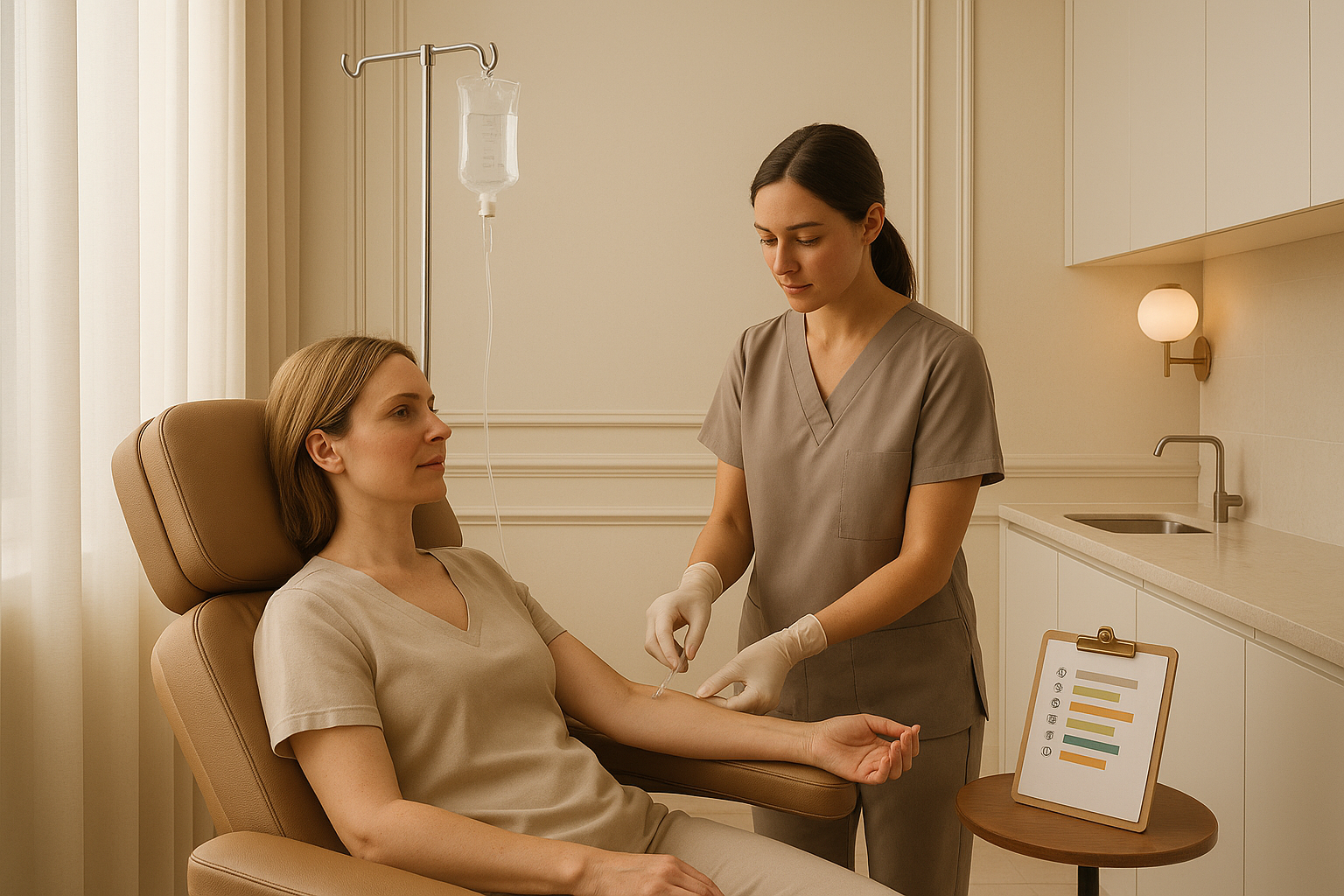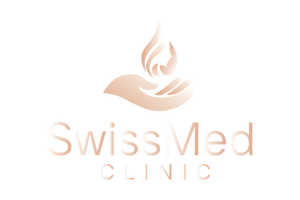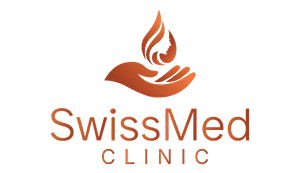IV Drips That Actually Have Evidence: A Clear Scorecard For 12 Popular Ingredients

IV therapy has moved from hospital wards into wellness conversations. People hear about energy drips, glow drips and immunity drips and wonder whether a short session in a comfortable chair can lift fatigue, support recovery or help the skin look brighter. The appeal is obvious. Intravenous delivery bypasses the gut and places nutrients straight into the bloodstream. That makes it useful when absorption is poor, when levels are low, or when hydration is the priority. It can also be attractive to people who want a more immediate effect than oral supplements usually provide.
The reality is more nuanced. Some ingredients have strong clinical roles when there is a clear diagnosis or laboratory evidence of deficiency. Others have limited data for general wellness claims and are best positioned as supportive rather than curative. A few are fashionable but lack high-quality evidence for routine use. Choosing well means matching the ingredient to a defined goal, checking safety for your personal health profile and using a clinic that screens, documents and supervises the process properly.
This guide explains how to think about IV therapy without hype. It sets out a simple grading system for evidence and walks through twelve of the most requested ingredients so you can see which belong in a targeted plan and which are optional at best. It also explains who should avoid specific infusions, what a safe session looks like from consent to cannula removal and how SwissMed’s medical screening makes the process more predictable.
What “evidence” means in the context of IV therapy
Evidence is a combination of research quality, clinical experience and biological plausibility. A grade is never a guarantee of what you will feel. It is a guide to how confidently a clinician can recommend a substance for a stated purpose. High grades reflect multiple well-designed studies or long-standing clinical use in a defined condition. Middle grades reflect supportive data with caveats about dose, context or population. Lower grades reflect early signals, small studies or primarily anecdotal benefit. Across all grades, safety screening is essential because IV delivery carries risks that tablets do not.
For clarity, this guide uses four tiers. Grade A indicates strong evidence for specific indications in IV form. Grade B indicates moderate evidence or strong evidence in narrower contexts. Grade C indicates limited or conditional evidence with potential benefit in selected cases. Grade D indicates insufficient evidence for routine wellness use or a mismatch between claims and data.
The quick scorecard at a glance
Ingredient | Evidence grade |
Normal saline or lactated Ringer’s (hydration) | A |
Vitamin C | B |
Vitamin B12 | A in deficiency, C for general energy |
B-complex (B1, B2, B3, B5, B6) | B in deficiency or high demand, C for general wellness |
Magnesium | B |
Zinc | B in deficiency, C for colds and skin claims |
Selenium | C |
Glutathione | C for pigment and recovery support |
NAD+ | C for fatigue and focus; D for anti-ageing claims |
L-carnitine | C |
Amino acid blends | C for recovery when intake is low |
Alpha-lipoic acid | C for neuropathy support; D for generic detox claims |
The table is only a start. The details matter, so each ingredient is explained below with typical use cases, who might benefit and who should avoid it.
Hydration solutions: normal saline and lactated Ringer’s
Hydration is the foundation of many IV sessions and deserves a clear place in any evaluation. Normal saline and lactated Ringer’s are hospital-grade fluids designed to restore volume and correct mild electrolyte imbalance. They are Grade A because their role is well established in medicine. For wellness use, they are most helpful when dehydration underlies the way you feel. Long travel, heavy exercise in heat, gastrointestinal losses or difficulty tolerating oral fluids are examples where a litre of balanced fluid can restore comfort.
Hydration drips are not a substitute for persistent symptoms such as ongoing vomiting, chest pain, severe dizziness or fainting. They are also not appropriate for everyone. People with heart failure, advanced kidney disease or significant swelling are at risk of fluid overload. This is why screening questions and a brief examination are important before the line is placed. At SwissMed, vitals are recorded and absolute contraindications are checked before any bag is hung, because good outcomes begin with appropriate selection.
Vitamin C
Vitamin C supports collagen synthesis, antioxidant defence and immune function. In IV form it bypasses the tight control the gut exerts on absorption, which means blood levels rise quickly. This is useful in defined medical settings and can be reasonable in short, targeted courses for people who do not tolerate oral doses or who have a documented low level. For general wellness the evidence is moderate at best, which is why Vitamin C sits at Grade B overall. It is not a cure for infections, and very high doses require caution.
There are important caveats. People with a history of kidney stones, particularly oxalate stones, should approach high-dose vitamin C with care. Those with G6PD deficiency should not receive very high doses because of the risk of haemolysis. A competent clinic will ask about these issues and adjust the plan or request tests when needed. Vitamin C can be part of an immunity-focused drip, but it works best when combined with sleep, nutrition and hand hygiene rather than as a stand-alone promise.
Vitamin B12
Vitamin B12 supports red blood cell production and nerve function. In proven deficiency it is a Grade A therapy and can transform how a person feels within days to weeks. Deficiency is more common in strict vegans, those with pernicious anaemia and people with gastrointestinal conditions that impair absorption. In these cases IV or intramuscular routes are useful because oral absorption is unreliable. For general energy in people with normal levels, evidence is weaker, which earns a Grade C for non-deficient use.
B12 is generally safe but the reason for low levels should be explored. If the cause is autoimmune, ongoing maintenance is often required. If the cause is dietary, nutrition support may resolve the problem without long IV courses. SwissMed’s pathway includes simple blood tests to confirm deficiency before planning a series, so that people who need B12 receive it and those who do not are not exposed to unnecessary treatment.
B-complex
B-complex refers to a group of water-soluble vitamins with roles in energy metabolism and nervous system function. IV delivery of B1, B2, B3, B5 and B6 can be useful when there is documented deficiency, increased demand or poor tolerance of oral supplements. Athletes in heavy training, individuals with chronic gastrointestinal issues and people recovering from surgery are examples where a short course can make sense. This sits comfortably at Grade B for targeted use and Grade C for general wellness claims.
B-vitamins can cause warmth or flushing during infusion. B6 should be dosed thoughtfully because very high cumulative doses have been linked with neuropathy. A clinician who documents ingredients and totals across sessions prevents inadvertent excess. This record-keeping is routine at SwissMed so that complex blends remain within safe ranges.
Magnesium
Magnesium is involved in muscle relaxation, nerve transmission and energy production. People with leg cramps, migraine tendencies or poor sleep often ask about it because oral forms can upset the stomach. IV magnesium can be calming and can relieve muscle tightness. It earns a Grade B for these supportive roles. It is not a stand-alone treatment for chronic disease and must be balanced with kidney function because magnesium is cleared renally.
Infusion should be paced sensibly. Rapid magnesium pushes can cause flushing, warmth and low blood pressure. In a monitored setting with a controlled drip rate these effects are minimised and most people find the experience comfortable. If you take medications that affect the heart rhythm or if you have kidney disease, magnesium requires extra care or may be avoided.
Zinc
Zinc participates in immune function and skin repair. In the presence of deficiency it is helpful. As part of a drip for someone who struggles with oral zinc due to nausea, IV zinc can be reasonable. For the common hope that zinc will shorten colds or quickly improve acne, the data are mixed. Zinc sits at Grade B in deficiency and Grade C for general immune and skin claims. Excess zinc can lower copper levels over time, which is why long, heavy use without monitoring is unwise.
Skin health is multifactorial. If acne or delayed wound healing are your concerns, consider a broader review rather than relying on a single nutrient. Hormones, skincare, sleep and stress all influence outcomes. IV therapy can support a plan, but it does not replace basic cornerstones.
Selenium
Selenium is an antioxidant trace element that supports thyroid function and immune defence. In IV form it can be considered in specific clinical contexts under supervision. For broad wellness claims the evidence is limited, which is why selenium is Grade C. The safe range is narrow. Very high intakes can cause hair and nail changes and gastrointestinal discomfort. A clinic should avoid cumulative loading unless a deficiency has been identified and should integrate nutrition advice so that diet covers everyday needs.
Glutathione
Glutathione is often described as the body’s master antioxidant. In IV form it is popular for recovery after exertion and for people who pursue skin brightening. The evidence base is developing and most benefits remain anecdotal or drawn from small studies, which places glutathione at Grade C. Some individuals report clearer skin and reduced dullness when glutathione is part of a broader routine that includes sun protection and a balanced diet. Others feel little change.
There are practical points to consider. Glutathione works within a network that includes vitamin C, B-vitamins and amino acids. If those inputs are limited, a large glutathione dose may not produce the hoped-for effect. People with asthma should be cautious because sulphite sensitivity may be relevant. Pigment conditions are complex. A thorough dermatology assessment is sensible before relying on any single ingredient for tone.
NAD+
NAD+ plays a role in cellular energy metabolism. Interest in IV NAD+ has grown because clients report clearer focus and steadier energy. Research in humans is still emerging, and protocols vary widely. For fatigue and concentration in selected individuals it can be considered a Grade C option, provided the session is supervised and expectations are measured. Anti-ageing claims sit at Grade D because evidence in healthy humans is not strong enough to support bold promises.
NAD+ infusions can feel intense during delivery. People describe chest tightness or nausea if the rate is too rapid. This makes controlled, slow infusion important. Medical screening is essential because certain heart conditions or migraine patterns may be aggravated. A clinic that is comfortable with gradual titration and that pauses when a client feels uncomfortable will deliver better experiences than one that pursues a fixed, fast timetable.
L-carnitine
L-carnitine transports fatty acids into mitochondria, which is why it is discussed in the context of exercise recovery and metabolic support. In deficiency states or in very specific clinical settings it has a role. For general performance claims it earns a Grade C. Some people feel less heaviness in the legs after a series. Others notice little change. It should be avoided or used with caution in people with thyroid disorders unless overseen by a clinician who understands the interaction, because high doses may influence thyroid hormone activity.
Amino acid blends
Amino blends supply building blocks for muscle repair and neurotransmitter production. They can help when dietary intake has been low, after illness or during heavy training phases when appetite falls. They are less useful for people who already eat adequate protein. That is why they sit at Grade C. For those who do need them, IV delivery offers a short bridge while normal eating resumes. A dietitian can help determine whether an amino blend makes sense or whether a nutrition plan will do the same job without a line.
Alpha-lipoic acid
Alpha-lipoic acid is an antioxidant with research in diabetic neuropathy and oxidative stress. In IV form under clinical supervision it may support nerve symptom control and earns a Grade C in that narrow role. For generic detox claims it is Grade D because definitions are vague and outcomes are hard to measure. It should be avoided in people with a thiamine deficiency until that is corrected and used carefully in those on thyroid medication.
Who benefits most from IV therapy
IV therapy is most helpful when there is a clear target. People with documented deficiencies who cannot tolerate or absorb oral supplements benefit directly. Individuals recovering from illness, surgery or travel who need hydration and a short period of nutrient support may feel better more quickly. Athletes who are deep into a training block and struggle to eat enough for a day or two sometimes use a planned drip as a temporary measure, although food remains the core strategy. People with complex fatigue deserve thorough medical assessment because a drip may comfort without resolving the cause.
The common thread is definition. A short consultation that explores symptoms, medications, allergies and goals will reveal whether IV is the right route and which specific ingredients make sense. SwissMed uses this model. A clinician reviews your history, checks vitals, and requests laboratory tests when the plan depends on a number rather than a guess, such as B12, ferritin or thyroid markers. This keeps treatment specific and reduces the risk of sessions that feel pleasant but do little in the long run.
Who should avoid or delay IV therapy
There are groups for whom IV therapy is not appropriate unless prescribed for a defined medical reason. Anyone with an active infection at the intended cannulation site should wait. People with poorly controlled heart failure or advanced kidney disease are at risk from fluid. Those with severe needle phobia may be better supported with oral plans rather than pushed through a distressing experience. Pregnancy and breastfeeding require a conservative approach. Some nutrients are safe, others are not, and emotional reassurance matters as much as ingredients. If you are taking photosensitising antibiotics, strong acne medications, or anticoagulants, discuss these first. Safety often lies in small adjustments rather than blanket rules.
What a safe IV session looks like
A safe session begins before you sit down. Consent is informed and unhurried. Your clinician explains what is being infused and why, how long it will take and what you might feel. A cannula is placed with sterile technique and secured so that minor movement does not dislodge it. The infusion runs at a controlled rate. You are observed, not ignored. Staff can see the site and can respond if there is discomfort, swelling, flushing or dizziness. The line is removed with care and a dressing is applied. You are advised about fluid intake and what to expect over the rest of the day. There is a clear process for follow-up questions. SwissMed follows this pattern and documents doses so that future sessions build on what worked rather than starting from scratch each time.
How to choose a drip that matches your goal
People usually arrive with a simple aim. They want to feel less tired, recover after travel, support skin clarity, or be ready for a demanding week. Rather than a long menu of fixed recipes, a better approach is to start with the goal and then match ingredients that have logic for that outcome. Hydration, B-complex and magnesium work well for recovery from travel or a heavy week because they address fluid, muscle tension and energy pathways. Vitamin C and zinc can support immune function when you are run down, provided doses are sensible and not repeated endlessly. Skin-focused plans often include glutathione together with vitamin C and an emphasis on sun protection. Energy-focused plans may consider B12 if levels are low and a conservative NAD+ protocol if screening is clear. SwissMed offers named drips such as Immunity Boost, Skin Brightening, Energy and Performance, Recovery and Hydration and Anti-Ageing for ease of reference, but the composition is adjusted after consultation rather than copied blindly from a template.
Frequently asked questions
How quickly should I feel a difference?
Hydration is usually felt within hours as thirst settles and headaches fade. B12 in deficiency changes energy over days. Magnesium can relax muscles during the session. Ingredients like glutathione and NAD+ are less predictable and vary between individuals. The most reliable shifts follow defined problems such as dehydration or deficiency.
How often should I have a drip?
Frequency depends on the reason for treatment. Short, planned series are common for documented deficiencies. Maintenance for wellness goals is individual and should not become weekly by default. If you feel you need frequent drips to cope, it is better to step back and review nutrition, sleep, workload and medical checks.
Can I combine ingredients safely?
Combinations are common but should be designed deliberately. Interactions and cumulative totals matter. A clinician should record everything that goes into your line and review past sessions so that single doses and running totals remain within safe ranges.
What are the risks?
Bruising, vein irritation and temporary discomfort at the cannula site are the most common. Rare risks include infection, allergic reaction, fluid overload and electrolyte imbalance. Screening, skilled cannulation and attentive observation reduce these risks. Report unusual pain, swelling or breathlessness immediately.
Is IV better than tablets?
Neither route is always better. IV is faster and bypasses the gut, which helps when absorption is an issue or when hydration is the goal. Tablets are cheaper, simpler and effective for many aims. The route should follow the problem rather than the other way around.
Will a drip help my skin
Some people notice brighter skin after improving hydration and correcting low nutrients. Glutathione is popular but results vary. Sun protection, sleep and a consistent skincare routine remain the pillars of skin health. A drip can support, not replace, these habits.
Book an At Home GP Visit
If you want a drip that is chosen for your body rather than a buzzword, book a consultation with SwissMed Clinic. You will sit with a clinician who reviews your goals, checks for contraindications and, where appropriate, requests simple blood tests before building a plan. Ingredients are selected for purpose, doses are documented and you are observed throughout. The aim is to help you feel better with a treatment that is safe, measured and worth your time.







